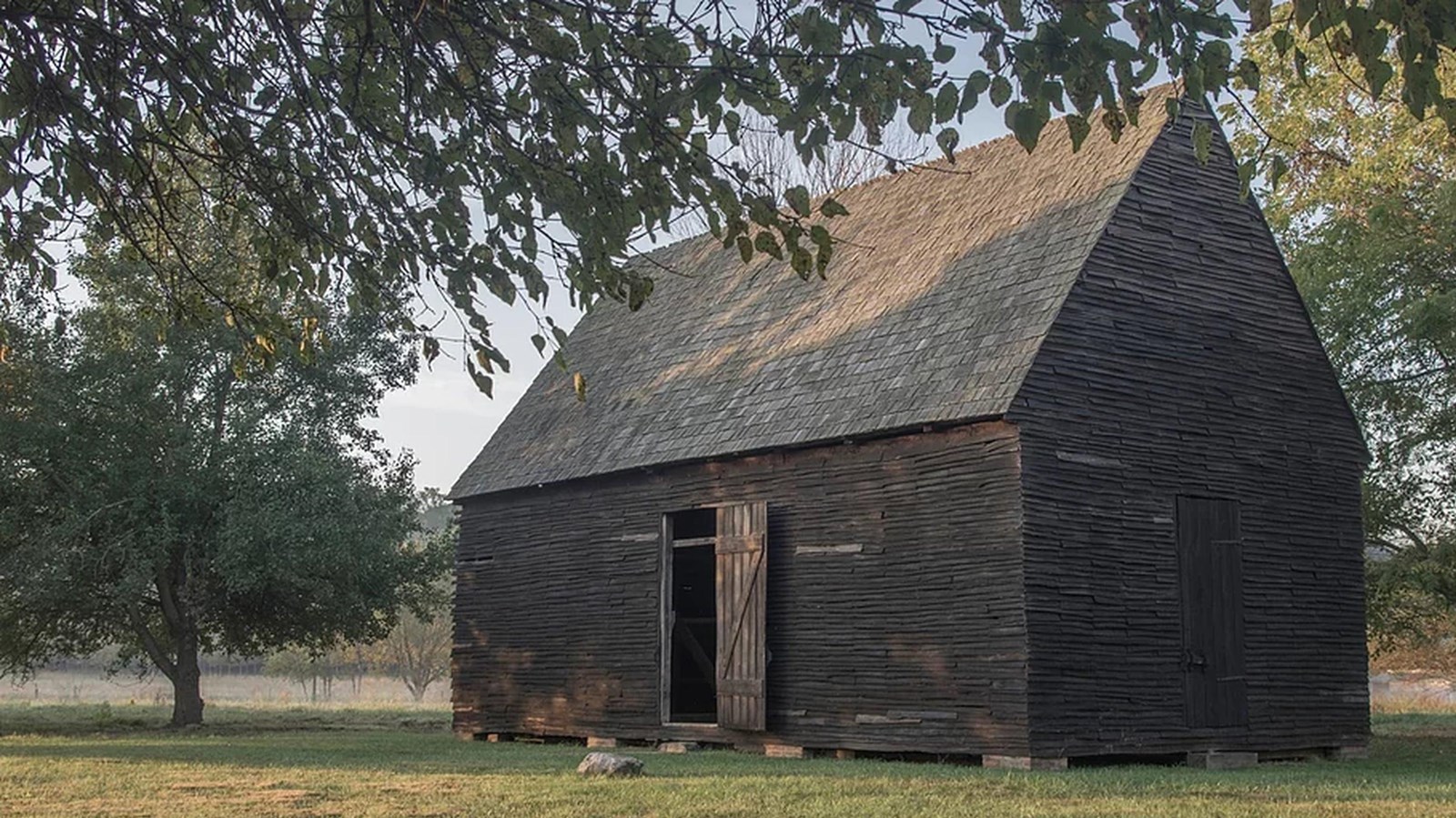Last updated: April 15, 2021
Place
National Colonial Farm - Tobacco Barn

Accokeek Foundation
Historical/Interpretive Information/Exhibits
The tobacco barn which now stands at the National Colonial Farm is arguably one of the most significant known remaining pieces of agriculturally related 18th-century architecture in eastern North America. This tobacco barn was originally the property of William Hall of southern Anne Arundel County. He had two such barns, and they were the largest and most important structures on his property. Built well, these barns survived all manner of weather, but one of the barns, at last, was endangered by development plans. Efforts by the National Park Service and the Accokeek Foundation secured the relocation of this tobacco barn to the National Colonial Farm. The barn features fascinating construction techniques and was carefully reconstructed to preserve early agricultural messages. The original designers had made use of pieces from earlier barns. The basic construction technique is known as “Tidewater framing” and consists of plates, rafters and corner braces connected by pinned mortise and tenon joints. Hand adzed oak, walnut and chestnut timbers predominate. The roof is steeply pitched at about 54 degrees, and the eves rest on a false plate (where the soffit would normally fit) allowing for increased ventilation.
The frame was covered with clapboard siding in approximately 4-foot lengths. The open spaces, where clapboards have been left off, serve to increase ventilation as well. All siding and roofing were secured with completely hand-forged nails made in the 18th century. The tobacco barn is capable of housing 12,000-18,000 lbs of tobacco. At a time when most people have lost connection to land and agricultural roots, visitors are invited to enter the tobacco house, stand under the curing leaf and weathered beams and experience the rhythms of our agricultural past that continue to inform the present day.
